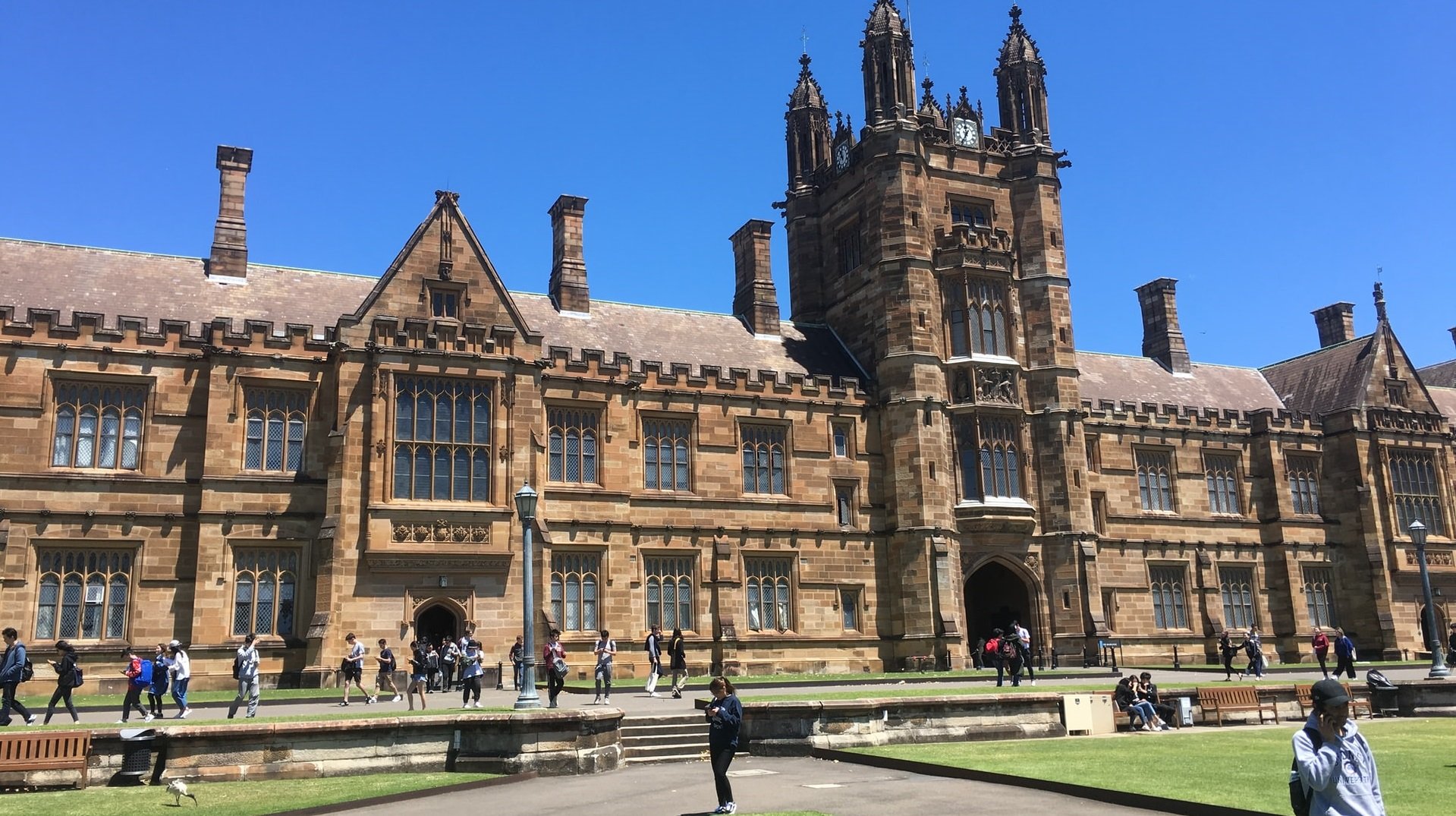Powerful Statement of Purpose: The Secret Ingredient
The most potent secret ingredient of a powerful statement of purpose (SOP) is incredibly simple and perhaps not what you think. You are certainly not going to find it reading scores and scores of statements of purpose examples available on the internet. If you are imagining the secret ingredient to be some kind of a winning format or a boilerplate statement of purpose template, you are wrong. However, by the time you reach the end of this article, you will have it in your pocket. And you will be able to put down a personal statement for a graduate school or a statement of purpose for an MBA program without ever needing to go through a sample SOP. Let’s dive in.
What is a Statement of Purpose?
A statement of purpose is also known as a letter of intent or a personal statement. There may be minor differences between them based on usage and connotation, but they don’t matter. A statement of purpose is typically required as part of the application procedure for graduate programs and research-oriented programs like doctoral and postdoctoral studies. Sometimes, you may need a statement of purpose for undergraduate studies too, especially if you are an international student. It is used by the admission panel to ascertain your interest in the program. An SOP isn’t meant to educate the council about your hard credentials (that’s the work of your resume). Your statement of purpose is meant to convey the life experiences that brought you here.
A statement of purpose for grad school or for an MBA program is a standard requirement in western colleges and universities. More recently, even Asian universities have started including SOPs as part of their admission procedures. This is primarily in response to how the Asian curriculum has evolved to international standards and, as a consequence, drawing higher international student mobility to Asian countries.
What universities expect in your statement of purpose
- Universities may specify that they want to see what’s not already mentioned in your resume.
- Universities may enquire how the program fits in your larger plan
- Oftentimes, universities will lead you to what they’d like to see in the SOP. For example, they may ask you,
“What have you done so far in the field of your choice?” or
“Tell us how you have demonstrated leadership qualities in the past.”
Statement of purpose word limit
Usually, the SOP word limit is stipulated by the university. Even if a university does not specify a word limit, remember, brevity will serve you well. That said, saying too little will defeat the purpose of writing a personal statement. You would be wasting an opportunity to impress the admission officers. Between 1,000 to 1,200 words is considered a reasonable SOP word limit to fit everything you have to say whilst not inducing fatigue in the reader.

statement of purpose template
Why do you need a statement of purpose?
Let us move away from application procedures for just a bit and understand the spirit behind writing a statement of purpose. If you understand this, you will write your SOP draft faster. Not only that, but you will also not need to read a ton of statement of purpose examples before writing one by yourself.
Basically, the college that is going to grant you admission does not know who you really are. At least, not beyond the bullet points in your resume. The trouble is the inspiration for wanting to join a college or a particular program may not be captured in the resume. Very often, students can trace back the source of inspiration to events in their childhood. Therefore, the job of grad school personal statements and MBA SOPs is to capture that inspiration and relate it to the program you are applying for. Let us look at some examples of what kind of life events we are talking about.
Unearthing the inspiration behind a statement of purpose
Example 1: Using unique experiences from the past
Say, you went on an African safari during your holidays and ended up with an enduring love for wildlife. Now, you want to do a grad program in zoology to become a wildlife biologist. As you can imagine, your SAT scores or GPA are not going to explain why! You will need to tell the colleges about your trip to Africa in a personal statement for graduate school.
Example 2: Overcoming a challenge or adversity
Yet another statement of purpose example could be overcoming a challenge or adversity. This is a popular theme and rightly so. Many of us find an immense drive to pursue a certain academic path due to a challenge we faced in our past. It is worth highlighting a couple of things regarding using this theme.
Firstly, the adversity you faced or the challenge you overcame need not be an intense or a unique one. Even everyday stories can make great SOP content. For example, a student who worked systematically to overcome juvenile obesity is a common enough story. But it can spark an academic interest in public health and nutrition which then makes a unique point in a statement of purpose for grad school.
Secondly, your experience need not have a direct connection with the program you choose. Every kid dismantles toy cars and airplanes. But not all of them will want to become automobile engineers or aircraft designers. As long as you are able to draw a connection credibly and convincingly, you can use any meaningful experience you like. Taking the same example as above, the student battling obesity would have learned the virtue of determination, persistence, and a goal-oriented approach at a young age. This would have come in handy at all academic levels – SOP for grad school, SOP for MBA, SOP for Ph.D., etc.
Example 3: Chasing a unique dream or a vision
Take the example of a student who grew up with a limp caused by polio. He applied for a master’s in Dance Theatre (not a degree in Physiotherapy or Orthopaedics). The points we discussed above, i.e., overcoming difficulty and choosing an unconnected academic path are both illustrated here. But there is also a whole new dimension about reaching for a difficult goal that never fails to impress universities. If such is your case do not hesitate to include that in your grad school personal statement.
The above examples should give you some ideas of what to look for in SOP content.
SOP connects your past with a potential future
To answer why you need an SOP, you will need to unearth your inspirations behind wanting to pursue something today. You will need to connect the dots between your life experiences and your academic track. You must present a complete picture of who you are behind the veneer of your resume. If you understand this true spirit behind an SOP, you will not need to see any statements of purpose examples.
What if a university does not ask for a statement of purpose?
Once you know how valuable the opportunity to tell your story via a personal statement is, you will miss it if it is not part of the process. Even if a particular university does not specifically ask for an SOP, it may include essay-form questions that serve the same purpose. In some online applications, you may have a placeholder called “Additional Information”. Use this space creatively.
Elements of a strong statement of purpose
We have talked about how the statement of purpose or personal statement is your opportunity to take your assessor beyond your scholastic credentials. There may be some differences in the SOP depending on the program you are pursuing. The expectations from a personal statement for graduate school may be different from a statement of purpose for an MBA. However, admission committees have certain baseline expectations from all kinds of SOPs. We have presented some aspects that your SOP must not fail to address. We highlight some more here in the same order that we have highlighted before.
1. Vision
Picking from the previous section on being aware of your inspiration behind choosing a particular academic path, the first aspect that you must address right in the introduction is your vision for your life. This sets the tone for the rest of the personal statement.
2. Expectations from the program
The admission panel will want to see how the choice of program ties to your vision. Make sure you identify things about the program or the university that uniquely help in achieving your vision. That is why you need to be careful while stating your vision. Lifting a vision from a statement of purpose example will not cut it.
3. Academic achievements
By academic achievements, we do not mean you have to demonstrate being a high achiever in academics in your personal statement for graduate school. What is expected of you is to talk about your academic achievements (whatever they may be) from the perspective of your passion and the program you are applying for. For example, you may talk about how you maintained a GPA of 2.5/4 while being active in your school football varsity team. Now you may want to pursue a degree in sports psychology. The crucial point here is to never miss discussing your academics.
4. School activities
Every university would want students who can add to the culture of the university and be involved in activities that can further their reputation. Make sure you highlight activities from your academic life that demonstrate this caliber. You could talk about projects, published works, camps, workshops, contests & awards, club activities, etc.
5. Extracurricular activities
You may have been active in a wide range of extracurricular activities from sports to community development. Make sure you highlight those that help you build a cohesive theme in your SOP. You may decide to skip a few activities too if you feel it distracts the reader from the theme you are attempting to build. Remember, a statement of purpose or a personal statement is your canvas. You can decide how you would like it to look.

Grad School personal statement
What makes a statement of purpose powerful?
Anybody who promises you a winning statement of purpose template is clearly misleading you. That is because the one and only winning feature for a powerful SOP cannot be templatized. And that is “originality”. You should embolden the word, underline it, and highlight it. Because, ultimately, you succeed for your own individual style of telling your story, not for boxing your life into a statement of purpose template. Therefore, what you are about to read are merely elements that help you tell your story better.
1. A strong introduction
Ideally, the introduction should set a clear vision or an objective statement that forms the glue that holds the rest of your story together. The goal should be a well-articulated and specific story.
2. Highlight wins and successes
This bit is obvious, isn’t it? However, there is a fine balance between sounding confident and sounding brash and arrogant. You must certainly put your best foot forward in your statement of purpose. But do so with humility. You can take the help of someone qualified to guide you on what accolades to include.
3. Relevance
When you have a lot to talk about, you may end up confusing the reader. Do not dump your bucket list of accomplishments in your SOP. It is always a good idea to parse through everything you’ve got and only include points that are relevant for the program you’re applying for.
4. Talking about weaknesses
Nothing reflects a confident well-organized mind better than talking about weaknesses, failures, setbacks, or such likes. You must bring out what you learned from that experience, how it has shaped your vision and how it is relevant for the program in question. However, this does not mean you go on a rant about weaknesses and gaps in your resume (like year drops). So, be measured about it.
5. Storytelling
Raw facts are boring. But the story behind it isn’t. You want to keep the admission council engaged in your statement of purpose. The easiest way is to convey it like a story. Here are some of the elements of good storytelling that you can incorporate in your SOP. Keep it personal, leave out irrelevant details and stick to chronology as much as possible. SOP professionals are experts at this brand of storytelling, so if you are not confident, hire help. Just be mindful of not force-fitting your background into a standardized statement of purpose example format.
6. Writing style
The text should be error-free and free of clichés. The writing style should be simple and straightforward. Avoid being informal or casual. And always maintain a formal tone and language but don’t stuff big words.

statement of purpose example
How to get started with writing an SOP
If you do not know where to begin writing your statement of purpose, here’s a simple step-by-step approach to get you out of the limbo.
- Read the college or university application carefully and familiarize yourself with their SOP requirements or specific questions.
- Read up about the college and the course you wish to apply for.
- Prepare a list of highlights of your life from all spectrums, i.e., academics, school projects, awards and recognition, extra-curricular activities, etc.
- Adhere to chronology.
- Write about each event and how it has shaped your vision or your life.
- Discuss your SOP with people who have known you well. That includes family, teachers, and friends. These discussions often give you clarity at many levels.
- Write the first draft of your SOP based on these inputs addressing all the aspects of a good statement of purpose we have highlighted above.
- Discuss your SOP with an experienced person, preferably someone with knowledge of admission procedures. A stranger can give you more objective feedback than someone you know.
By this stage, you should be close to a final draft of your SOP. If you are still struggling, you can even consult a professional who helps with SOPs for grad school, MBA, and Ph.D.
How long does it take to write a statement of purpose?
Not more than a day if you have a firm grip on exactly what you want to say in your statement of purpose. But how many of us are like that? An SOP is a crucial part of your application and, arguably, the most important part that has the potential to change the outcome of the process for you. So, it is better to give yourself sufficient time to prepare it. You will be asking what sufficient time is. Well, it is whatever time it takes for you to feel satisfied with your statement of purpose draft. If this is your first time writing one, we would recommend a two-week timeframe from start to end. Once you have a comprehensive SOP draft, you can use all or parts of it as required in your application.
The secret ingredient
If you haven’t yet figured out what the secret ingredient to a powerful SOP is, then here it is. Be yourself. An admission officer reads through scores of applications every year and can sniff out a phony sounding SOP from a mile away. You have no upside in reproducing this very crucial document. Instead, treat the statement of purpose draft like a soul-searching exercise and produce an original piece that is a true reflection of who you are. All the best.
Related articles
World’s Leading Higher Education Systems: A Guide to International Students and Educators
